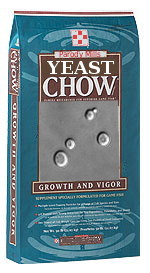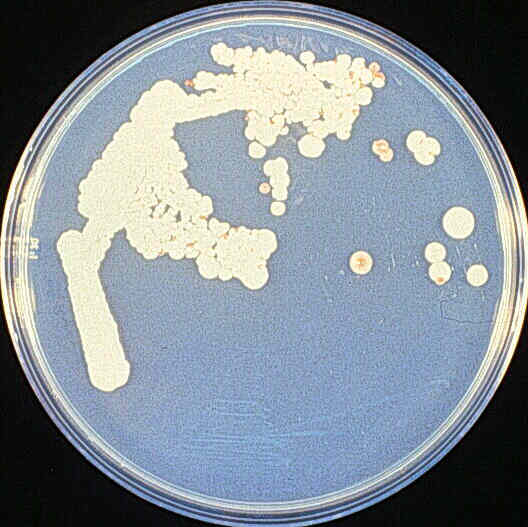All right then – I’ve got five pounds of honey, a pound of frozen cherries, packets of a couple of different dried yeasts, miscellaneous other potential additives, two 2-gallon polyethylene terphthalate fermentation containers with screw-top lids and spigots, several feet of aquarium airline tubing and connectors, silicone sealant, and miscellaneous kitchen gadgets (including a hydrometer). Now it’s time to discuss what I’m about to do and fish for comments and criticisms before I jump into it.
 My goal here with this brewing experiment is a quick primary fermentation. And to compare the results from two different yeast strains, uh, TWO goals, quick fermentation, yeast strain comparison, and fermentation container design. THREE goals. Quick fermentation, comparing yeast strains, fermentation container design, and to try to keep the yeast cultures from dying off too quickly during the fermentation. FOUR. Four goals…
My goal here with this brewing experiment is a quick primary fermentation. And to compare the results from two different yeast strains, uh, TWO goals, quick fermentation, yeast strain comparison, and fermentation container design. THREE goals. Quick fermentation, comparing yeast strains, fermentation container design, and to try to keep the yeast cultures from dying off too quickly during the fermentation. FOUR. Four goals…
In this post, I’ll stick to talking about what I’m putting into the brew and how I hypothesize my additives and process with speed the fermentation along and help keep a large portion of the yeast viable during the primary fermentation.
Actually, the health of the yeast populations and the speed of fermentation are overlapping goals; more cells remaining alive and healthy means more cells simultaneously chewing up sugars and spitting out ethanol for me, resulting (hypothetically) in faster primary fermentation. In this experiment, I’m going to be focussing on nutrients and spices that are reported to benefit yeast activity. Here’s the process I am currently planning to follow, focussing primarily on the fermentation-boosting parts:
- I’ll boil the 5 pounds of honey with enough tap-water to make about 2 gallons of must, adding the frozen cherries sometime after the boil gets underway.
Fermentation boost: we have water so hard that you have to wear a helmet to take a shower. (Joke stolen from my Environnmental Chemistry instructor, so you can blame Dr. Rosentreter for that one). It’s loaded with Mg2+ and Ca2+, which seem to be able to help the yeast to produce ethanol faster and survive higher ethanol concentrations better[1][2] as well as just being general nutrients[4].
- Two approximately ½-liter amounts of the must will be put into clean glass quart bottles and used to develop the initial yeast culture for pitching (each one for a different strain of yeast).
Fermentation Boost: Growing up a large population of yeast from the dried yeast packets before pitching will give me a faster start. In addition, the large headspace and the use of cloth rather than plastic or rubber covering of the top will allow oxygen to get into the starter culture, helping it to develop more quickly and in a more healthy fashion (i.e. a larger proportion of healthy, viable cells).
- Nitrogen supplementation: Capsules of arginine picked up cheap at a certain big-box store will be added to the yeast starter.
Fermentation Boost: “Free Amino Nitrogen” is perhaps the most important bulk nutrient for yeast, and arginine seems to be the preferred amino acid source[3][4], presumably because it contains the most reduced nitrogen per molecule of the amino acids. I actually want to try to develop a process for using dry milk powder instead, but achieving sufficient hydrolysis of the milk proteins looks like it’s going to take some development on my part. For now I’ll “cheat” and use arginine instead.
- Vitamin supplementation: A single well-crushed children’s “chewable vitamin” (“Flintstones™” or generic equivalent) will be added to each starter culture as well.
Fermentation Boost: Pantothenic Acid (Vitamin B5), Inositol, trace minerals, and small amounts of additional potassium and phosphate to supply vital nutrients to the yeast culture.[4]
- Fermentation-enhancing spices: I will be adding ground ginger and cinnamon (actually cassia) to the must near the end of the boil.
Fermentation Boost: In addition to providing what I think will be excellent complementary flavors to the final product, it appears that even fairly large amounts of these two spices – among others – provide a boost to fermentation rate[5] (via Shirley O. Corriher’s “Cookwise”[6]) of Saccharomyces cerevisiae cultures. If I’m doing the conversions appropriately, the peak fermentation boost for ginger works out to something like 3 tbsp of ground ginger per liter, or something like (very roughly) 10 tablespoons per gallon. I don’t plan to add quite so much, but a couple of tablespoons of each spice in the two-gallon batch ought to provide some nice flavor while still hopefully providing a boost to the fermentation rate as well.
“Cinnamon”: In the US, the rust-colored stuff labelled “Cinnamon” is not, actually, cinnamon. True cinnamon (Cinnamomum zeylanicum)is actually tan in color. What you get in the US when you buy a bottle of “Ground Cinnamon” actually comes from Cassia (Cinnamomum aromaticum), a closely related plant. Realistically, as far as I have been able to find out so far, there’s not likely to be a huge difference in the active components or flavor. While I haven’t yet gotten my hands on a copy of the old article from Cereal Chemistry[5] mentioned above, I’d give good odds that the “cinnamon” used in the study was also actually cassia anyway.
There’s one more thing that I hypothesize would help promote my goals that could be added: small amounts of oxygen[7] (say, less than 13% O2, or very roughly speaking, around half of the normal atmospheric concentration or less). However, I’m still trying to work out an easy way to achieve this automatically and am not yet ready to try it. Besides, this is already pretty poorly-designed for a “real” scientific experiment as it is, considering the number of variables that are really contained in this brewing process. Really, my hypothesis here boils down to a relatively vague “This mixture and process will allow me to finish the primary fermentation within a day or two of pitching”. If I ever have opportunity to do serious experimentation on this, it’ll require setting up a large number of separate fermentation reactions to assess the effects varying each individual set of hypothetically-fermentation-boosting additives. Hopefully one of these days things will settle down enough to let me try it.
If anybody sees anything stupid (or just interesting) up there, please say something…
[1] Dombek KM, Ingram LO: “Magnesium limitation and its role in apparent toxicity of ethanol during yeast fermentation.”; Appl Environ Microbiol. 1986 Nov;52(5):975-81.
[2] Nabais RC, Sá-Correia I, Viegas CA, Novais JM: “Influence of Calcium Ion on Ethanol Tolerance of Saccharomyces bayanus and Alcoholic Fermentation by Yeasts.”; Appl Environ Microbiol. 1988 Oct;54(10):2439-2446.
[3] Carter BL, Halvorson HO: “Periodic changes in rate of amino acid uptake during yeast cell cycle.”; J Cell Biol. 1973 Aug;58(2):401-9.
[4] Fugelsang KC, Edwards CG: “Wine Microbiology – Practical Applications and Procedures (2nd Ed.)”; 2007; Springer Science+Business Media LLC; pp 15-18
[5] Wright WJ, Bice CW, Fogelberg JM: “The Effect of Spices on Yeast Fermentation.”; Cereal Chemistry. 1954 Mar;Vol.31,100-112
[6] Corriher, SO: “Cookwise”; 1997; HarperCollins Publishers, inc; New York; pp 69-70
[7] Nagodawithana TW, Castellano C, Steinkraus KH: “Effect of dissolved oxygen, temperature, initial cell count, and sugar concentration on the viability of Saccharomyces cerevisiae in rapid fermentations.”; Appl Microbiol. 1974 Sep;28(3):383-91.
 Another T-shirt to add to my list of T-shirts I want.
Another T-shirt to add to my list of T-shirts I want. Just a brief “aw, crap, has it really been over two weeks since my last post?” post, really, but I thought this was interesting.
Just a brief “aw, crap, has it really been over two weeks since my last post?” post, really, but I thought this was interesting. My goal here with this brewing experiment is a quick primary fermentation. And to compare the results from two different yeast strains, uh, TWO goals, quick fermentation, yeast strain comparison, and fermentation container design. THREE goals. Quick fermentation, comparing yeast strains, fermentation container design, and to try to keep the yeast cultures from dying off too quickly during the fermentation. FOUR. Four goals…
My goal here with this brewing experiment is a quick primary fermentation. And to compare the results from two different yeast strains, uh, TWO goals, quick fermentation, yeast strain comparison, and fermentation container design. THREE goals. Quick fermentation, comparing yeast strains, fermentation container design, and to try to keep the yeast cultures from dying off too quickly during the fermentation. FOUR. Four goals…




